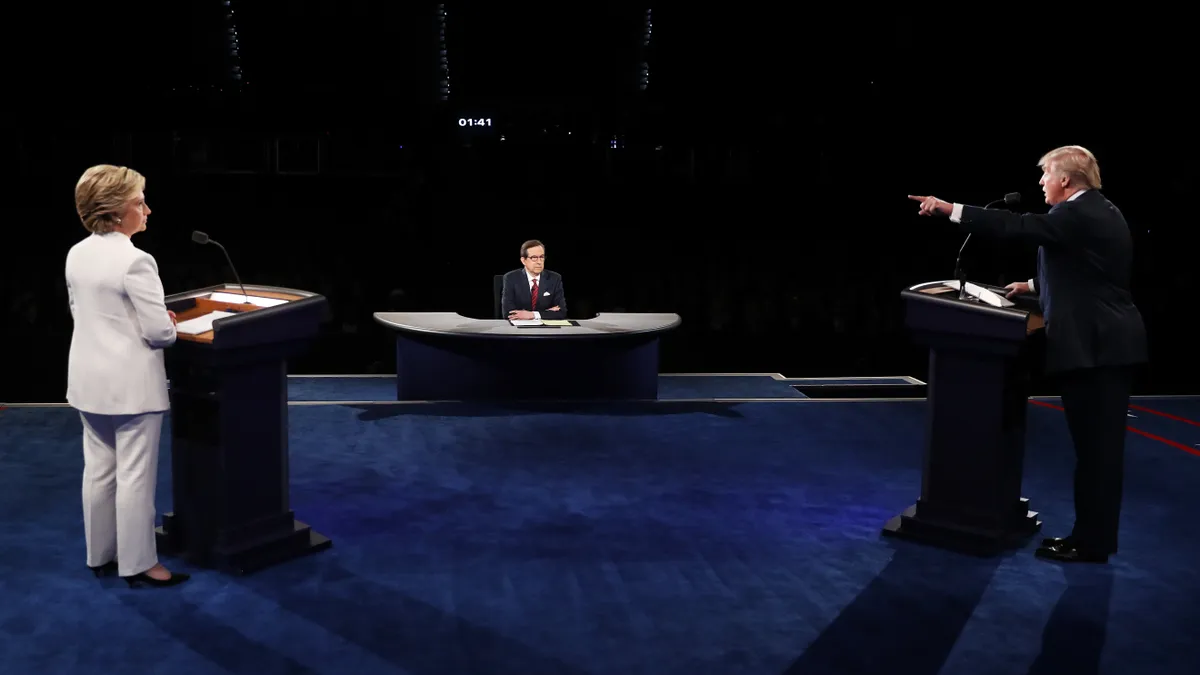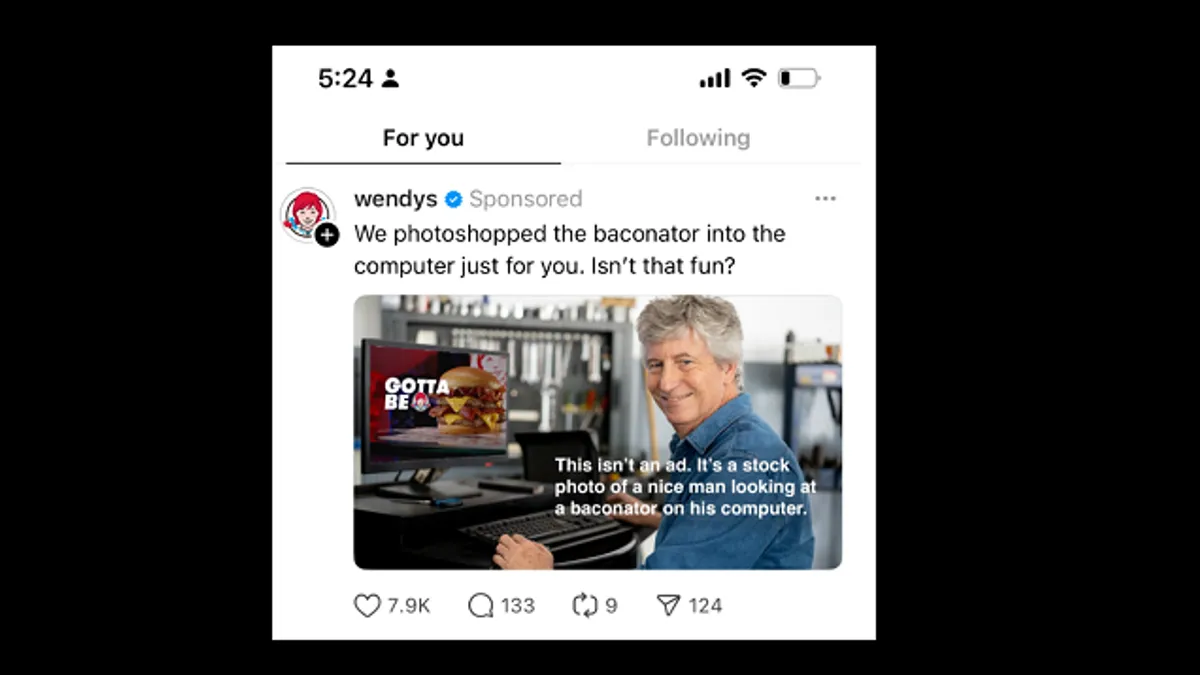The social media approach of presidential candidates Hillary Clinton and Donald Trump couldn’t be more different, but marketers stand to learn something from each, from how to use social as a PR tool to harnessing data-driven marketing.
The presidential election is upon us and with it the breathless horse race coverage will end and the postmortems will begin, with pundits analyzing how the candidates used data, managed to get out the vote and comported themselves during this election cycle. One area where marketers can take away insights that can be applied to their own efforts is how the different campaigns handled the social media channel. While Trump's strategy reflects social media's significant role in generating press, Clinton's points to social's powerful storytelling capabilities. Certainly some of Trump’s execution has hurt him during the campaign – such as the infamous 3 a.m. tweetstorm – but his social media outreach has also kept his core audience engaged.
“Trump’s approach is erratic, as you can see the difference between when he’s personally tweeting vs. his team,” Cassandra Schwartz, senior product marketing manager at Rival IQ, told Marketing Dive. “However his content is consistent in tone and approach. His posts are often focused outward, attacking on others rather than himself or what he will bring to the office of president.”
“Trump’s campaign shows us how influencers can affect the opinion of others," Schwartz continued. "His ability to engage and rally supporters has significantly helped him throughout the campaign.”
Constituency outreach
Clinton’s approach is about leveraging the next generation, data-driven marketing capabilities offered by social media platforms and mobile apps, and Trump’s is exploiting social media’s value as a PR tool, Jordan Cohen, CMO of Fluent, told Marketing Dive.
Clinton’s Twitter approach is also rooted in a strong understanding of content her audience finds highly engaging while using short and direct sentences.
Don Hunter, president and founder, Acceptd, included third party candidates Gary Johnson and Jill Stein in his analysis of how Acceptd’s audience of young artists of all stripes viewed the race. He stated that Stein and Clinton traded the top spot in its internal poll.
“Hillary, while more aggressive and negative than Stein, similarly tends to speak in details, with a high degree of intellect and focuses on the positive aspects in America. Hillary occasionally interjects sarcasm and humor that speaks to our demographic,” Hunter said about the different social media approaches. “Donald Trump's inflection tends to be simple, emotional and not always well-supported, which runs contrary to the tone most of our artists look for.”
Another difference between Clinton and Trump on social media is how their support changed, or didn’t, over the course of the race. Kim Terca, director of marketing, Netvibes, told Marketing Dive the firm’s dashboards found that while Trump had the larger social media presence, his trend was stable. Clinton’s social presence trended up and grew over time, and social engagement overall spiked in response to major campaign events like debates or breaking scandals.
Looking at the larger picture, Fluent’s Cohen said Trump’s campaign will be remembered for its mastery of social media in service of drumming up press, adding that choosing Twitter as the platform of choice was deliberate since it appeals to journalists, PR reps, campaign operatives and political junkies.
“His over-the-top tweets were aimed at getting press coverage and it worked," Cohen said.
As for Clinton, Cohen stated her social media campaign was “far more traditional” and included paid Facebook ads that took advantage of the large audience and precision targeting capabilities to reach donors and voters, and to increase her email subscriber list.
Lessons learned
Netvibe’s Terca provided an example of why timing counts with social media outreach, citing the first mention of Miss Universe Alicia Machado — who became a focal point of the campaign — was back in May. She said at the time the story had a short two-day news cycle before fading. When the storyline was reintroduced during the first presidential debate at the end of September, it exploded and became a social media talking point.
“Of course, the fact that Clinton mentioned this story during the debate is a big reason the story took off on the second attempt,” said Terca. “But it's also an interesting strategy because during the debate, she had less than an hour of mic time to bring up favorable topics, so each topic she chooses is costly. In other words, there are many important subjects that Clinton didn't talk about because she chose to talk about Alicia Machado instead. It appears the gamble paid off.”
Other basic social media principles also paid off during the campaign. Rival IQ’s Schwarz said marketers can take away from all four candidates that timely and relevant posts matter and that engagement directly correlates with responding to recent events and getting involved in popular conversations.
“Clinton’s campaign has one strong tactic that any marketer can takeaway,” she added. “They’ve used social media to tell a story. Clinton has incredible engagement via YouTube where she’s been able to share compelling stories.”
Schwartz also warned that social doesn’t necessarily correlate with success as the best social profiles don’t indicate who will win an election, and the same applies to companies. She said social campaigns are only worthwhile when they drive desired action from the audience.
As a final thought, Cohen pointed out what might be most important lesson Trump can teach marketers about social media marketing - the rules of engagement are changing.
“The takeaway from Trump’s effort will be frightening to many marketers, especially digital and direct marketers: He kept the race tight without adhering to any of the conventional wisdom about how a campaign is supposed to be run,” he stated. “(Trump) reminded us of the enormous power that good old fashioned television still commands over elections, and the undeniable role and effectiveness of PR in getting a candidate’s message across to a large audience, far and wide. You may not agree with what the man says, but you can’t argue with the fact that he owned the news media in a way that has never been seen before.”






















